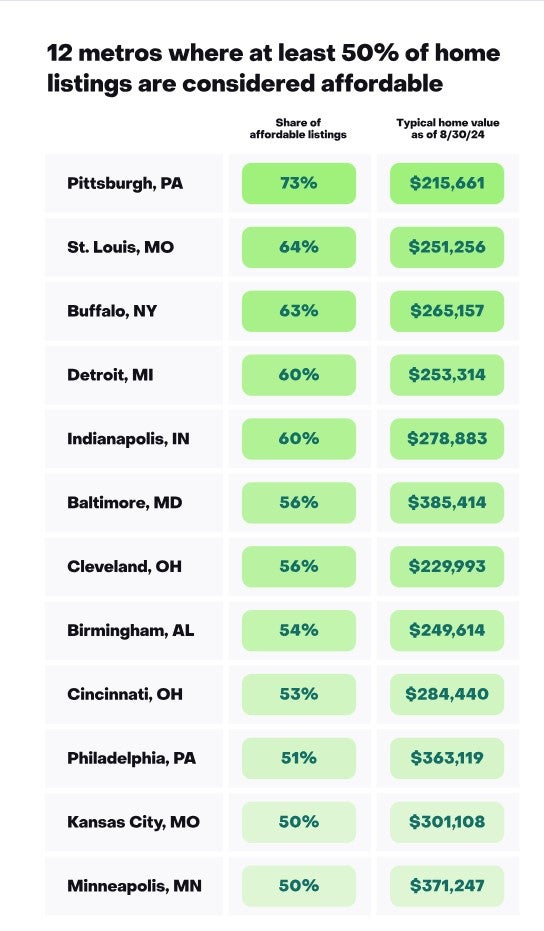Home Buying
Providence, too. So how do you figure out what you can afford?
Metro Boston is one of the least hospitable regions in the United States when it comes to affordable housing, according to Zillow.
Only 13 percent of the region’s housing stock is affordable, the same as Riverside, Calif., and slightly more than New York City, according to the October report.
Kara Ng, senior economist at Zillow, said metros like Boston have the largest housing deficits in the country and strong job markets, and these rachet up the competition for listings and keep prices high.
“Decades of undersupply in Northeastern markets have kept home values high relative to the median income in these areas,” Ng said.
Providence also made the least affordable list, with 15 percent of its stock considered affordable housing.
“As nearby areas like Boston became even less affordable and the hybrid work model made long commutes less of a hindrance, buyers began to look farther and farther out in search of affordability,” Ng said. “That drove up competition in the Providence metro.”
The rankings are based on a Zillow analysis of US metros that takes into account the typical home value, the median household income, and the monthly mortgage payment needed to buy a typical home with the current interest rates and a 20 percent down payment, according to the report.
Here are the nine least affordable metropolitan areas, per Zillow:

“There is a lack of development over the last ten years, and we’re caught in the demand,” said Theresa Hatton, chief executive officer of the Massachusetts Association of Realtors.
Jobs are plentiful in Boston and Providence, but the housing supply does not match that, Hatton said.
Post COVID, people migrated farther from the cities to where there is more inventory, she added. “We’re still way behind on the amount of homes that we need to reach the demand in Massachusetts … When you get away from the densely populated areas, there are definitely more opportunities for affordability.”
It’s a common refrain throughout the Northeast.
“Many of the Northeast markets have a long way to go to make up for the housing deficit that’s built up over the past couple of decades,” Ng said.
Most affordable metros
The Midwest dominated the list of the most affordable regions:

And the Southwest and Southeast are adding the most:

What can you afford?
When it comes to determining your budget for a home, Hatton said, it ultimately comes down to what you are willing to spend.
There are several factors that buyers need to consider in addition to the price of the home, such as the insurance and taxes, which vary by where you live, she said.
Debt also plays an important role, Hatton said. “Mortgage providers want to make sure that once you’re in a home, you can afford to stay in the home, and that’s where the taxes, insurance, etc., come into play.”
Ng said even a small shift in the mortgage rate or a personal credit score can push a monthly mortgage payment past 28 percent of the buyer’s monthly gross income.
“The 28% mortgage rule states that you should spend 28% or less of your monthly gross income on your mortgage payment (including principal, interest, taxes and insurance),” according to Chase Bank. “To gauge how much you can afford using this rule, multiply your monthly gross income by 28%. For example, if you make $10,000 every month, multiply $10,000 by 0.28 to get $2,800. Using these figures, your monthly mortgage payment should be no more than $2,800.
Ng added that home shoppers need to keep track of real-time data to understand which listings are within reach, so they can act quickly.
“Mortgage rates play a major role in a buyer’s purchasing power and impact what a buyer will need to afford to pay on a monthly basis,” said Ng, adding that affordability also depends on an individual buyer’s personal finances, including their credit score, debt-to-income ratio, and savings for a down payment.
Address Newsletter
Our weekly digest on buying, selling, and design, with expert advice and insider neighborhood knowledge.
